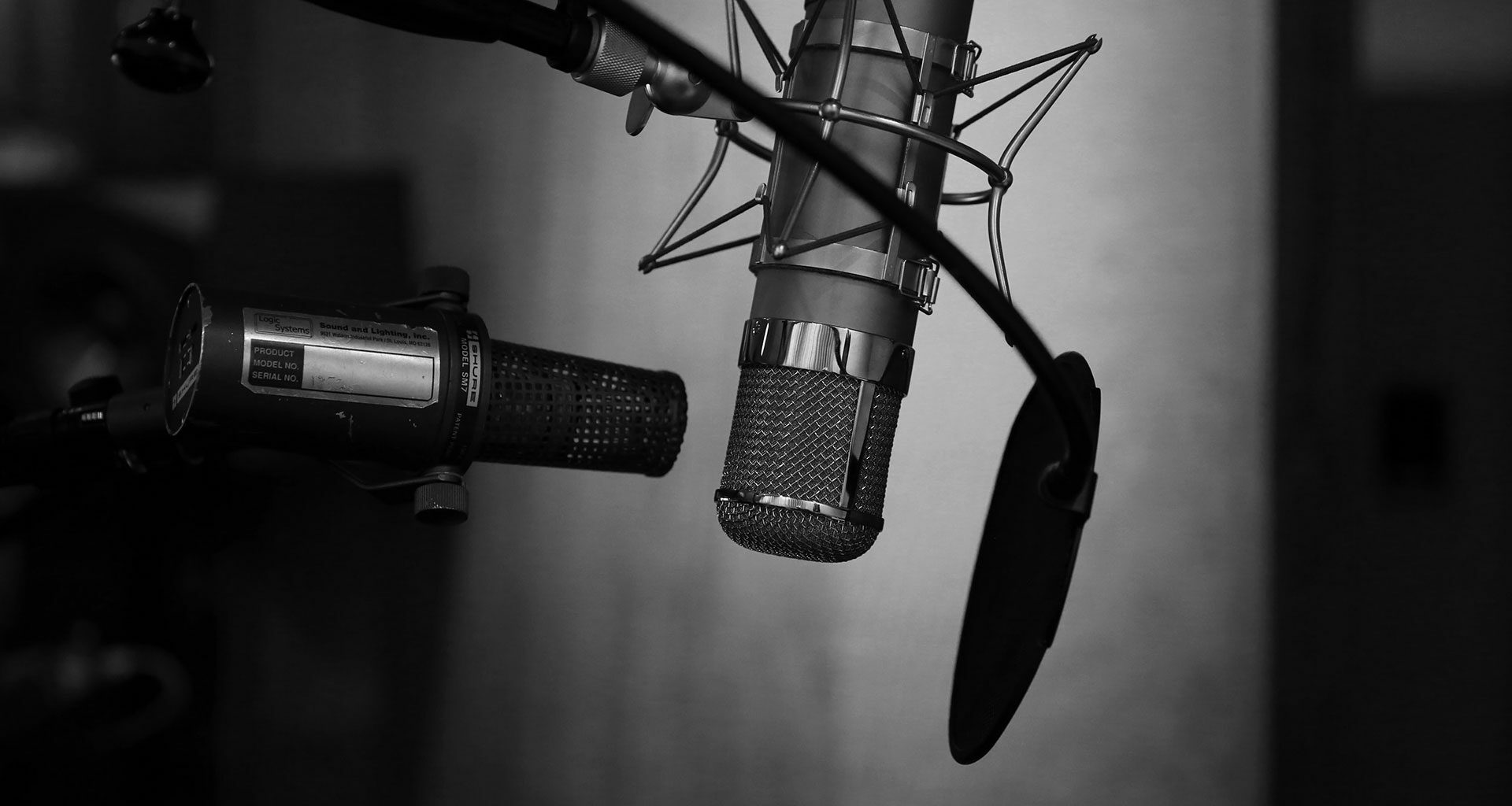There are many examples over the years of what’s new in marketing being relegated to junior members of a team, with executives waiting for scale before paying attention. Social Media is a recent example, and sadly as new platforms, like TikTok and Snap before it, roll out it’s probably still a current example. A frequent strategy has been, “Get the intern to do it” as if only a “digital native” would understand how to communicate in limited character counts or emojis (despite the occasional eggplant emoji accidentally on purpose getting dropped into corporate comms…).
By E.B. Moss
But as new tactics grow mainstream and influencers start making real money — first in ten-cent affiliate links to multi-thousand-dollar endorsement deals, or direct response ads get pushed over by brand messaging then everyone wants to be a cool kid. As social finally became the purview of marketers and bona fide strategists, so is podcasting becoming their darling now, too.
The Podcasting Bandwagon is Rolling
While podcasting technically pre-dated Facebook and Twitter, it didn’t gain its executive-awareness raising stature until some time after Serial won a Peabody in 2014 and MailChimp was laughing all the way to the bank as an early-in, low CPM sponsor. Some argue the medium is not getting enough messages as some sponsors await more scale. But those tracking uptake and engagement, such as Triton, Edison Research, Podtrac, Westwood One and NPR, are all bullish on the podcasting. Estimates of unique shows now number at around one million and listenership has, according to Edison/Triton’s Infinite Dial, reached enough critical mass at 100 million+ monthly listeners that advertisers should be sitting up and paying attention. So, brands now pulling the process back from the interns and once again the bandwagon has gotten rolling.
Let the Lessons Begin
To answer the “why” embrace podcasting as a B2B tool, think of your most compelling, successful salesperson bottling and syndicating their best client-whispering: it’s a way to personalize a company’s value proposition in what feels like a H2H conversation. Is there a stodgy executive (see above, who didn’t have the time for this before!) who needs to be humanized? Just put them in an audio chat. Have a complex offering that begs explanation? A podcast can be explanatory journalism at its best. But do manage expectations; this is a longtail marketing tactic with a limited pool of listeners wanting to hear even the most scintillating conversation about sprockets. Still, in today’s environment it’s essential to be everywhere and anywhere your customer may be, and that includes in their ears.
So, what’s involved in the making of and marketing of on-demand audio as a B2B tool? A lot more than emojis.
Start with the Strategy
Refer back to your WHY for creating a podcast then answer the WHO you hope to have listen. Layer in the WHAT of the style that will support the why and who; most B2B podcasts will be interview style, except for those companies who may have a high-profile personality at the helm or in a creative or marketing role who can hold their own and just expound. Think Gary Vee of Vayner Media. Just remember, as Gimlet Managing Director, Matt Lieber, was cited as saying, “What makes for a successful branded podcast are a lot of the things that make for a successful podcast period. If a brand wants to make a commercial that’s 20 minutes long, it will fail.” The concept is to be helpful and informative on a topic endemic to your expertise. ReWork podcast from SaaS platform Basecamp has a great example with an episode on the challenges of parents working from home.
In a meta example of good use of a podcast to grow business, and how to promote a B2B podcast by doing guest appearances, the Wealth Without Wall Street team created their eponymous podcast, which they say has led to exponential growth, and in a recent episode featured podcast expert, Pat Flynn of Smart, Passive Income. That same week the Wealth hosts appeared on Dave Jackson’s School of Podcasting podcast.
B2B podcasts can also attract employees by painting an audio picture of the company environment, as Xandr just did with their Unsponsored Content show, or provide a thought-provoking platform to spotlight sister divisions or clients, such as Floor 9 “where technology and culture collide” by another in the media space, IPG MediaLabs.
Now Just Do It
Most companies will have the budget for better equipment or backend support than the average small business, or even editors on staff. But for all, a microphone is key. From there, in our work-from-home scenarios, decent quality can be achieved through one’s computer and online platforms that range from Skype to Zoom to newcomer Squadcast. There are dozens of equipment recommendations online, but the key is to NOT use just your earbuds or computer built in mic. Shelly Palmer describes some best practices for ambience-enhancing recording in this episode of Insider Interviews, which happens to be a B2B-focused podcast that gives brands a third-party podcast outlet…and happens to be hosted by yours truly.
We can get into all the details that add to the quality, like an intriguing intro, stock music options, and run times, but theoretically you’re all marketers and can figure that out.
So, now you’ve got the audio, but it should live on a hosting platform, like Libsyn, Blubrry, BuzzSprout, Captivate or others. Look around (and feel free to use MossAppeal as your Blubrry promo code if that helps!) for the “house” for your podcast and then share its “street address” – the RSS feed — on Apple, and Google and iHeart, etc. Those are the directories where people can find and subscribe to your podcast. You can certainly opt to just host your podcast locally on your corporate site as local audio file, but hosts will facilitate generating your RSS feed and ease of getting on those directories and thus growing in popularity.
Look at Trader Joe’s. Their top-ranking B2C podcast lives on their site as well as all other directories. But point of clarity: that podcast is a branded podcast – content endemic to the brand that is intended to grow awareness and consumer love. Our focus is the more narrow business to business ecosystem.
Optimize. Rinse. Repeat.
Like any good marketing plan that relies on more than the intern, you’ll want solid titles, meta descriptions and show notes, and yes, social media optimization, too. And regularity. Create expectations among your target audience of your consistent release timing – weekly, monthly? – and stick to it. You are, as mentioned, playing the long game. But all signs indicate podcasting is here to stay, even while we stay at home.
 E.B. is a strategist, podcaster, and writer who creates content and “explanatory journalism” that drives revenue and humanizes brands. She also profiles executives through her podcast, “Insider Interviews with E.B. Moss” and guest hosts/produces Advancing Diversity podcast for MediaVillage where she was formerly Head of Content Strategy. She ran ad sales marketing at Food Network, Lifetime and Westwood One and now helms marketing consultancy, Moss Appeal. To inquire about help with a B2B podcast please email [email protected]
E.B. is a strategist, podcaster, and writer who creates content and “explanatory journalism” that drives revenue and humanizes brands. She also profiles executives through her podcast, “Insider Interviews with E.B. Moss” and guest hosts/produces Advancing Diversity podcast for MediaVillage where she was formerly Head of Content Strategy. She ran ad sales marketing at Food Network, Lifetime and Westwood One and now helms marketing consultancy, Moss Appeal. To inquire about help with a B2B podcast please email [email protected]
Photo by neil godding on Unsplash












